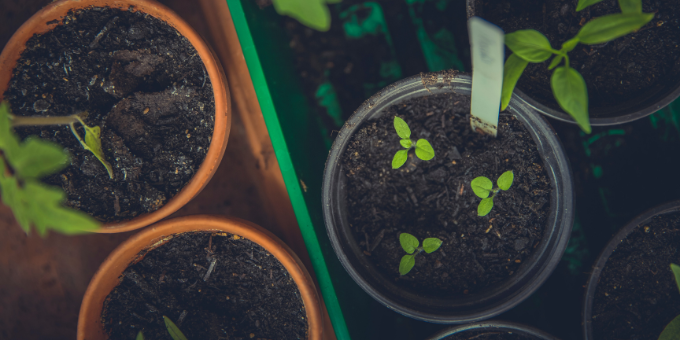You don’t have to be an expert to get into composting – you just need a few simple tools and techniques. This guide will show you everything you need to know about composting, including why it’s important and how it can offer you some pretty hefty fringe benefits.
Why compost?
Aussies smash through a lot of food waste and the result is overflowing landfill and both air and water pollution. Australian households were found to waste 28% of food purchases and the country puts out a whopping 80 million tonnes every year. We have a pretty big problem with excessive waste in this country with the average Aussie putting out just under 550 kilos of rubbish every year. But it’s not just us, half of fruit and veggie produce is wasted around the globe, indicating a widespread issue with food waste – which also contributes to climate change. This is because produce released methane, and when sitting in landfill by the masses, that’s a lot of methane.

On the bright side, around 35% of Aussies compost their household scraps, enjoying the benefits of free plant fertiliser for the garden. Find out how you can get started – it’s so simple you could get your compost up and running today.
What is compost?
Compost involves a process in which organic materials – like fruit and veggie scraps or coffee grounds – are recycled into a nutrient-dense fertiliser. It can be used to enrich soil in the garden, from growing flowers to veggie patches – compost can give any plant a growth spurt. There are a number of dos and don’ts when it comes to putting things into your compost mix.
What to put in your compost bin.
- Fruit scraps.
- Teabags and ground coffee.
- Egg shells.
- Grass and plant cuttings.

What not to put in your compost bin.
- Meat and fish.
- Milk and cheese.
- Eggs (excluding eggs shells).
- Coal.

Outdoor compost.
This is the type of composting that springs to mind when we hear the word – and it’s a tried-and-true way to get you started with the basics of composting.
- First, you’ll need to choose a spot for your heap. A spot near a source of water and which has shade is important.
- Mix your brown materials (leaves, branches, coffee grounds) with greens (fruit and veggie scraps) in a 3 to 1 ratio.
- Give your compost some moisture, but be sure not to waterlog it.
- Over time, you may start to see steam coming out of your compost heap – this is normal and just means it’s working.
- When the compost is dark and has no visible bits of food scraps, it’s ready to be used. It works well anywhere you’d use soil, and it happens to be highly nutritious food for plants to thrive on.

Indoor compost.
Just like outdoor composting, you can use fruit and veggies scraps, tea and coffee grounds, egg shells and – the difference is, you’ll probably use a compost bin or caddy to house your heap. Another difference is that by keeping your compost inside, you won’t have to worry about sheltering the damages of direct sunlight and rain – compost does well year-round in an indoor environment. But there are a few tips for getting it right:
- Use a strong material like stainless steel for your compost caddy.
- Prevent mould from taking hold. One way to do this is with an air filter, such as a carbon filter.
- Make sure the fruit and veggie scraps, and any other waste you compost, are covered in soil. If it’s exposed to the air, flies will be attracted to it and take up residence in your kitchen.
- Be sure to chop up scraps before composting them – it will break down easier.
- Now all that's left to do is wait!
Whether you set up inside or outside, it’s pretty hard to go wrong when composting – so long as you stick to the basic guidelines above. Get those gardening gloves on and give it a crack!






Leave a comment (all fields required)